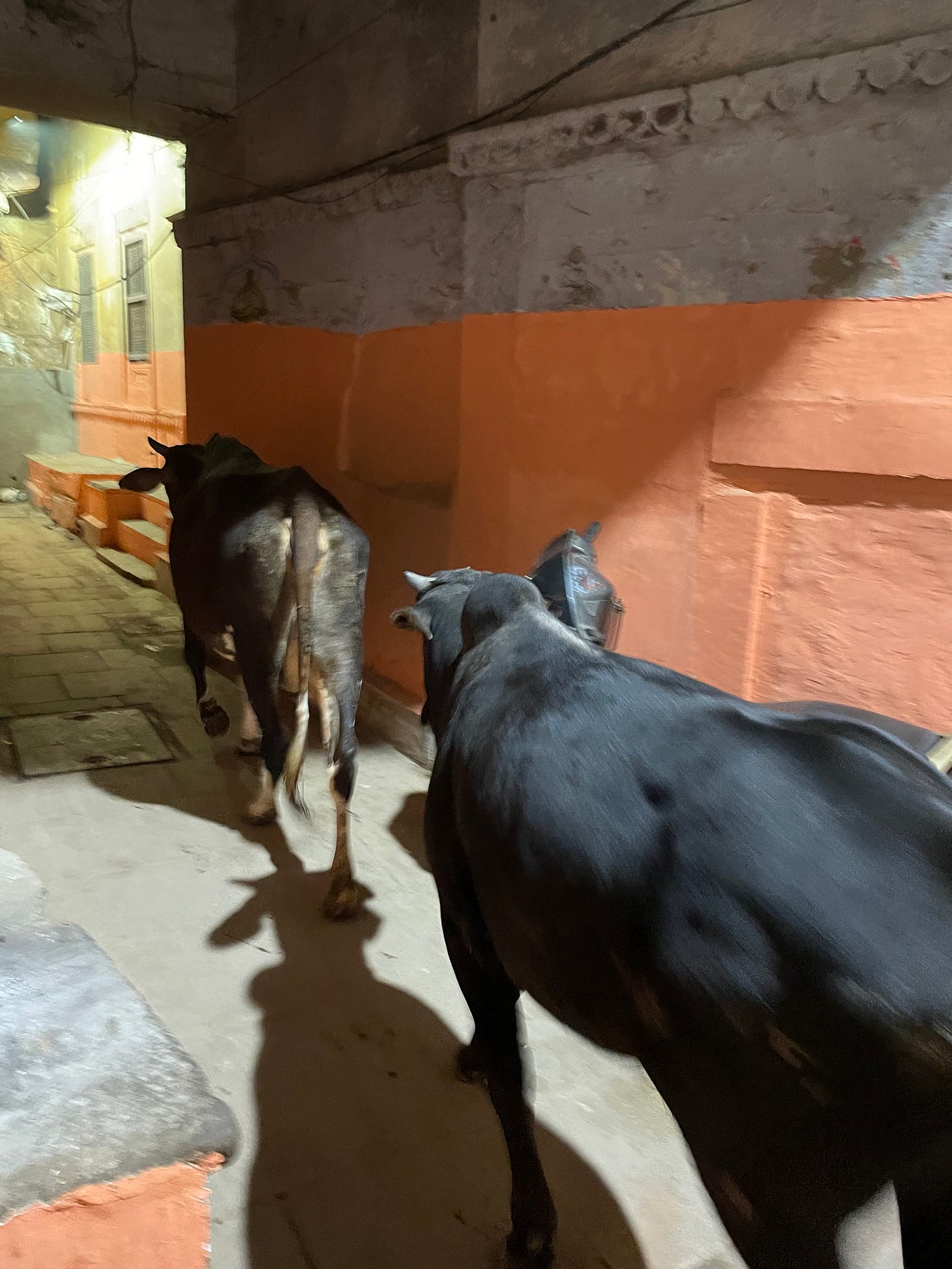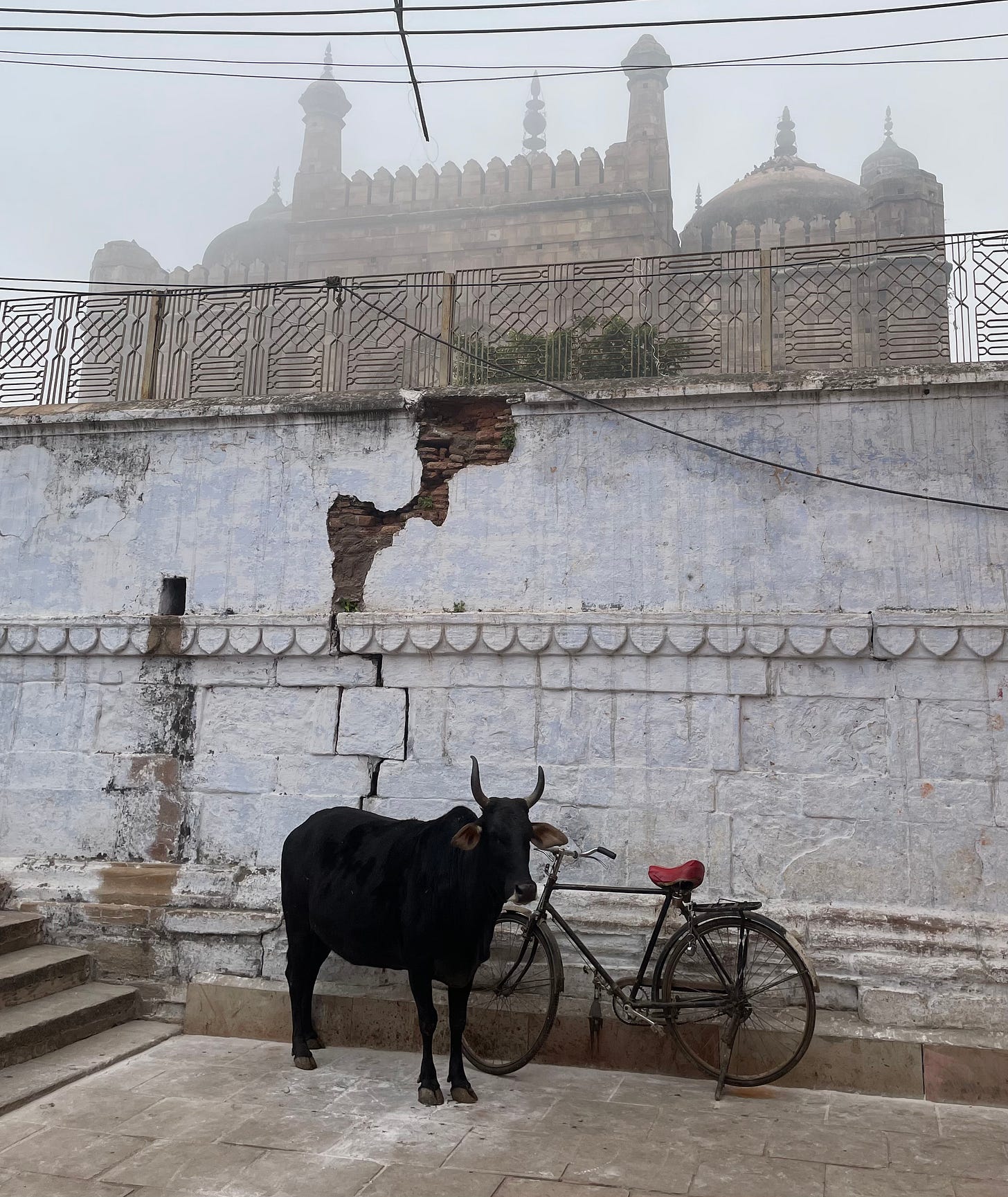VENGEANCE IN THE BULLRING
A Tamil novella about vengeance—of man and bull—highlights the brute in both.

Over twenty years ago, I was in a class devoted to studying American writer Ernest Hemingway’s craft in The Sun Also Rises, the 1926 novel in which he portrays American and British expatriates who travel from Paris to the Festival of San Fermín in Pamplona to watch the running of the bulls and the bullfights. I recall that I enjoyed neither the book nor the class. Hemingway’s terse writing, my immaturity as a reader, then, to appreciate his craft, and my inadequate grasp of all the elements that led to great storytelling contributed to my inability to appreciate both the writer and the teacher.
That book and that experience returned to me this past week even as I began reading C. S. Chellappa’s Vaadivaasal (Arena) translated from the Tamil by N. Kalyan Raman. Considering how much I enjoyed Vaadivaasal I realized how, so often, reading is as much about the work itself as it is about the person reading the work at a particular moment in his or her life.
In the writing of his novella, the late C. S. Chellappa was actually inspired by another work by Ernest Hemingway—The Undefeated—which deals with an aging bullfighter’s return to the sport after an injury. In his foreword, translator Kalyan Raman notes that Vaadivaasal is “a milestone in the annals of Tamil prose fiction” because the writer captures the inner dynamics of the village crowd and conveys the “subaltern speech” with great skill and fluidity in Tamil". Just as Hemingway introduced his readers to the conflict between man and beast in bull-fighting, Chellappa captures the thrill, the gore and the inhuman elements of the ancient game of jallikattu in a searing portrait of brute force in Vaadivaasal.
Originally published in 1949, Vaadivaasal is considered a modern literary classic in Tamil. It describes the events of an afternoon in Periyapatti, a village in southern Tamil Nadu, where a yearly jallikattu contest involving the traditional sport of bull-taming is about to begin.
There is a clear difference, from what I gather, between bullfighting and bull-taming. In Spanish-style bullfighting—practiced in Spain, Mexico, Colombia, Ecuador, Venezuela, Peru, as well as in parts of southern France and Portugal—it’s a physical contest in which men publicly subdue, immobilize, or kill a bull. In a jallikattu spectacle, the idea is simply to tame and cow the bull into submission to the human. In this passage, Vaadivaasal explains how.
“After goading an animal to anger and discovering its limits, a man dared to tame, control, and triumph over it—all those fighters had honed this game into an art through constant practice. Either you threw your arm around the bull’s hump in a brute hug, grabbed its horns and pushed them down, and while keeping the animal from rearing free, made it stand still on its four legs for a few seconds, or better still, you held the bull down till its legs gave way, making it stumble, bend at the knees and slide to the ground. If lacking strength and ability, the bull-tamer did not succeed and he had to let the bull get away he had to admit his incapacity. Indeed, he was obliged to look like a cripple and timidly stay away from the bull. In this contest of strength, a one-on-one bout between man and bull during the slanting sun’s hour of descent, there could be only one victor in that vaadivaasal.”
While the human beings daring to enter the arena do so of their own volition, the bulls, mighty and fearsome as they seem to be, are dragged into the arena to become part of a spectacle. The novella describes how once the bull is untethered, he’s poked, prodded and teased for the enjoyment and jeering of all surrounding the arena.
Vaaadivaasal opens with the arrival of bulls in the village as it gears up for the excitement of the taming contest. An old man, Pattaiya, strikes up a conversation with two young lads from a village out east, from a place called Usilanoor. The mention of the name of this village earns the curiosity of Pattaiya who is a walking encyclopedia on the most famous bulls and their tamers, their methods of attack, their strengths and weaknesses. As in every sport, we glean that in bull-taming, too, it’s often mind over matter. The two young men, both brothers-in-law, listen keenly to every warning and every suggestion from old Pattaiya.
Of the two young men, Picchi certainly has a reason to be in Periyapatti. He’s there to avenge the death of his father at the hands of a formidable bull called Kaari.. The two of them are there to take home the prize.
Picchi soon trounces every animal that enters the arena; none of those victories prepare him or his brother-in-law for the village zameendar’s prized possession, the bull called Kaari, who once gored Picchi’s father to death.
“There was a tremor in all those shouting voices. Fear exploded and pervaded the air. Noise and commotion filled the vaadivaasal. Within a few seconds, the crowd which had stood jostling at the arena vanished without a trace. In order to stay beyond the reach of the Kaari’s horns, everybody ran pell-mell, trying to hide in a safe spot.”
As Picchi gets ready for his greatest test yet, it’s clear that Kaari, the bull, may even be a sentient being with a mind of its own. The encounter between Picchi and Kaari is fraught with tension. In the book, their face-off extends over eighteen nail-biting pages of tight prose.
Even as the snort of the bull fends off and frightens those circling the arena, it seems no beast can stymie the venom of a spectator. The jeering by the villagers of both the men and beasts is relentless. It’s clear, as time goes on, that in the moment, every man in the ring refuses to believe that the bull is revered in the form of Nandi, which means “giving delight” or “giving joy.” It is, after all, the sacred vehicle of the Hindu god Shiva. But in his moment of one-upmanship, which human being will remember his maker? Picchi and his brother-in-law forget to meditate on the deity, Amman, before they confront the Kaari. Instead, Picchi enters the arena with the confidence that only humans possess when confronting the fury of nature. The Kaari does indeed seem to have a mind of its own at every point during the taming.
Recovering quickly, it wheeled around in the same direction in which Picchi was moving, turning its horns and waving them in alignment with his movement. Picchi froze when he saw the bull take a step forward. When the Kaari saw that he was not advancing towards it, it stopped dead and took up position, glowering at Picchi.
Is it really an animal? It is showing as much cunning as a human!”
This was the first time that people of that region had the opportunity to witness the Kaari’s traits firsthand. The way it behaved with intelligence equal to that of a human was truly awesome.”
A few years ago, the jallikattu sport became a sensitive topic in the state I call home in India, Tamil Nadu. When the Supreme Court banned jallikattu in May 2014 through a judgment on the grounds of cruelty to animals, it led to a state-wide protest on the sands of Chennai’s Marina Beach. The echoes of this protest over a cultural sport were heard in several parts of India. What intrigued me immensely at the time of the protest was how even those who would never dare to pay to watch a bull-fight were up in arms over the judgement. Cultural practices as ancient as bull-fighting have been popular for over 2000 years and have been a critical part of Tamil identity and culture.
In Tamil, Jallikattu literally means “adorning the bull”. It’s clear from the way it’s described in this novella that if an animal does survive the encounter, its future is not guaranteed after the clash. To all those animal rights advocates I must ask, most naively, perhaps, if ill-treatment of these animals prettied up for a fight in the bull-ring is any different from fattening cows for the slaughter houses here in the United States? The Humane Slaughter Act requires the humane treatment of animals during each of the stages before slaughter. (The grandest irony is in the juxtaposition of the words in the naming of the act itself.)
I found Vaadivaasal engaging, even at its goriest. It’s a visceral work, yet it transcends into the sublime during some moments. Towards the end of the story Kaari, the vanquished bull, is seething with shame. Its destiny is now writ on its horns. This dramatic scene is captured in a visual on the riverbed. After the taming by Picchi, the zameendar who owns Kaari rushes to the riverbed with the villagers following behind him.
At that fragile moment, I was forced to ponder these questions: Who is beast? Who is man? And who is avenging whom? By the time the story barreled to its inevitable finale, the answers to my questions were crystal clear.
The Kaari bull stood like a devil in the middle of the riverbed, still plunging its horns into the sand and digging it up, turning up the sand with its hooves and bellowing at the same time. Its swarthy, broad back, where a man could have easily lain, was covered with sand. Its horns with blood still dripping from them, were so thickly smeared with chunks of wet sand that they appeared to have been dipped in slush. Unable to quench its frenzy through ferocious assaults, it was raising hell standing at the same spot without any apparent aim or intent.



I attended the St Fermin festival for a story I wrote for Men’s Health, chasing Ernest Hemingway adventures around the globe. Pamplona was electric on bullfight afternoons. Blood lust mixed with adrenaline and fear will do that. I ate in the restaurant where, the day after the fights, the vanquished bull was served for lunch. Who’s the brute, indeed?